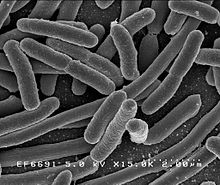
Popular Science highlights this paper from PLOS Pathogens. The research discusses creating hollowed out versions of viral capsids. These capsids would stimulate the immune system to produce antibodies without any potential for infection since the virus’ genetic material has been removed.
Call it hollow-hearted. Researchers have built a mimic of the outer capsule of the foot-and-mouth disease virus. Inside, where the virus’ genetic material normally lives, is empty.
Such synthetic virus-like particles could go into a foot-and-mouth vaccine that’s cheaper to make because it doesn’t require the tight biosecurity that a factory that makes vaccines from live viruses needs, its creators say. The researchers have also built the virus mimic in such a way that it can stay out of a refrigerator for longer than current foot-and-mouth vaccines, so it could ship more easily around the world.
In the future, the same techniques could apply to vaccines to the polio virus, which belongs to a large group of viruses related to hoof-and-mouth, Andrew Macadam, a polio researcher at the U.K. National Institute for Biological Standards and Control, told the BBC. Polio vaccines are now made with either weakened or killed polio viruses. (The weakened type still carries a small risk of reverting to its original form and causing paralysis. That vaccine is no longer used in the U.S., but some other countries give it out because it doesn’t require a highly trained medical professional to administer.)
The researchers hope it will lead to cheaper and less risky vaccines.
